![]()
Pladespilleren.dk
Ikeda - small Japanese world class wonders
Updated 10 October 2018 - Translated from Danish
Ikeda - Japanese world class wonders!
Ikeda 9ts
Ikeda 9tt
Ikeda Tai - integrated headshelll
Ikeda 9Gss
Ikeda IST-201 MC-Transformer - SUT
Producer: Ikeda Sound Labs, Japan - http://www.soleberry.net/cartridge.html
Sales in Denmark: Top Sound, Copenhagen - https://www.topsoundhifi.dk/
First a little story
A very rich man has bought a big yacht. Unfortunately, the engine can't start, so he calls in experts. Many tries, but must give up. They recommend him to summon an elderly retired sailor who knows everything.
The next day an old man arrives with a small bag under his arm. He looks at the ship and the engine, goes through everythng from bottom to top. Then he pulls a small hammer out of his bag. Knocks three times on a pipe and as if pure magic, the engine starts. He puts the hammer back into the bag and go home.
The next day the shipowner receives a bill of 10,000 US$. A lot of money for so little work, so he asks the old man to specify the bill.
The next day he gets a new bill:
• 3 strokes with a hammer - 15.00 US$
• Knowledge about where to hit with a hammer - 9,985 US$
In other words, knowledge is power and knowledge is money. It also applies to the cartridges I look at here. Making a good cartridge is not rocket science, but making the world's best requires a lot more. At the same time, unfortunately, many of those who know how to do it are not young anymore. There are not many new experts on cartridges and the few that we see...? Well, maybe they are good, but you know what you have, not what you get.  Who is Ikeda?
Who is Ikeda?
Isamu Ikeda (born 1929) is certainly not unknown in hifi contexts. Most people are probably familiar with Fidelity Research, which he ran for many years. In Japna he is considered as the father of the MC principle. Virtually
all of the major Japanese cartridge manufacturers have been taught by
him at one point or another in their career. Ikeda's
more recent milestones (50 years ago) include the introduction of
the FR-1 MC pickup with pure silver wire, air-wound coils, lightweight
needle and something new at that time; a line contact needle. During the FR-time most also know the FR-64 and FR-66 arms as well as the MC-201 pickup.
Fidelity Research was, like many others forced from the market when the CD came. FR closed in 1995, but immediately after Ikeda founded his new company Ikeda Sound Labs. They introduced their Series 9 using the same air coil technology (no coil former) that was developed for FR-7. They
also made a cartridge without cantilever inspired by the old Decca,
whose dynamic qualities are something Ikeda would like to achieve.
Ikedas new cartridges are all with cantilevers. He
gave up the concept of the direct mounting on the coils as it was too
sensitive to dust as well as too complicated to set up. 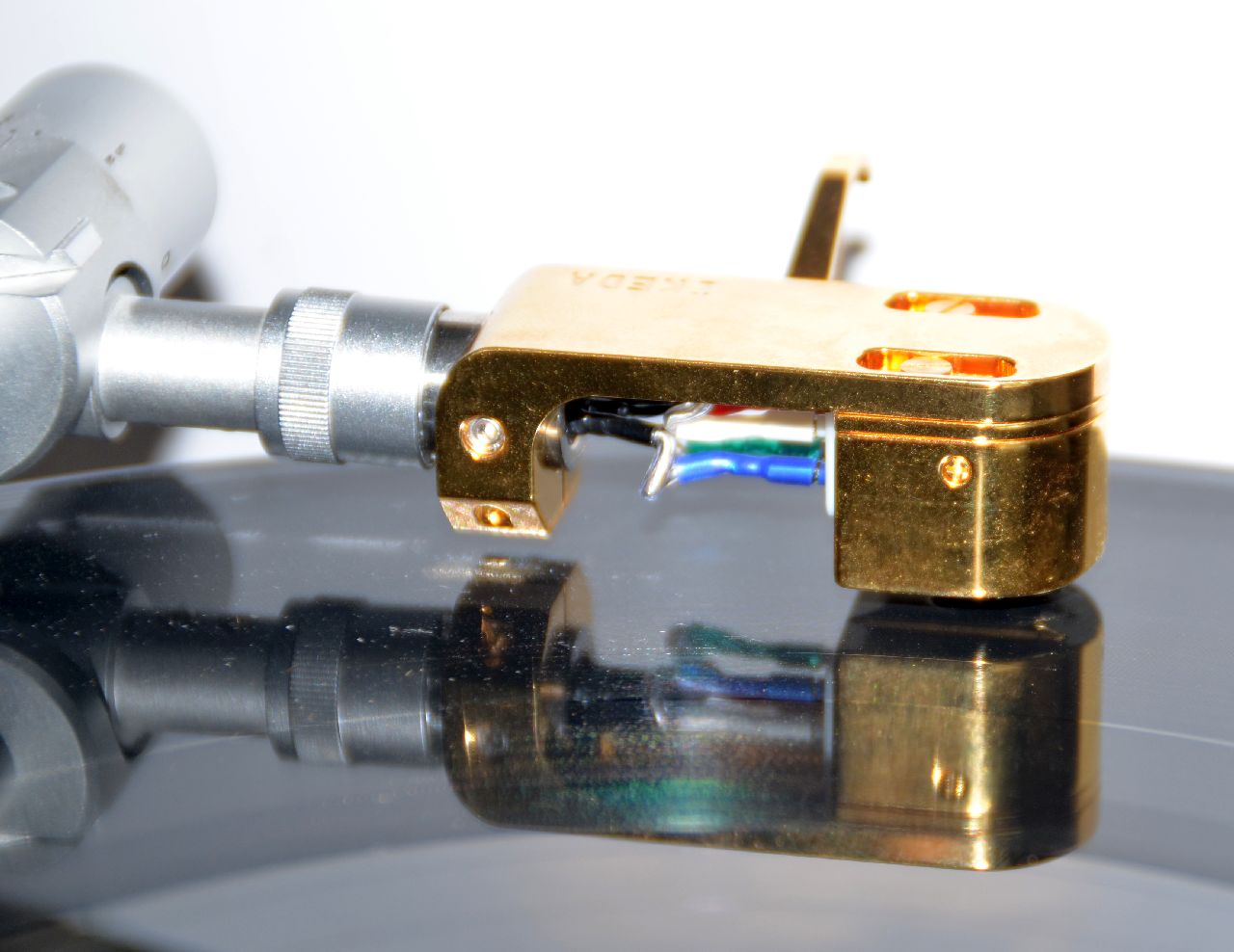 Direct to the top - Ikeda 9Gss
Direct to the top - Ikeda 9Gss
9Gss is the new top model from Ikeda, it is located above the former top model Kai, which is still in the program.
The cartridge looks like pure porn in the gilded appearance. A powerful 24-carat gold plating over silver is applied on the milled aluhouse. The
color differs from the others in the Ikeda programme, but in spite of
that the gilding should also give a little mechanical attenuation to the
otherwise very solid house. The
top base that lies against the arm / shell is made of titanium and
internally a special metal alloy has been used improving both internal
damping and transmission of the energy away form the cartridge and up through the arm.
As seen in the picture, it was delivered for review in a suitable gold-plated headshell, so it constitutes a whole. The cartridge can be moved back and forth in the shell, but this will ruin the design a bit. The alternative is to adjust the overhang (and effective arm length) by moving the arm at the base.
The
physical design of the cartridge housing itself makes it difficult
both to set up and to hit a particular location on the LP. The
short cantilever is hiding a bit underneath the cartridge. On the other
hand it is not as exposed as seen on some other cartridges (see
the pictures below).
I used it both with Ikeda's own ISD-201 transformer and directly into my Accuphase C-27 RIAA. The load was here 30 ohm, which I found optimal..
9Gss was introduced in April 2018 and is only made in 200 copies.
______________________________________________________________________________________________________________________________________________________________________________
More cartridges in the Ikeda family 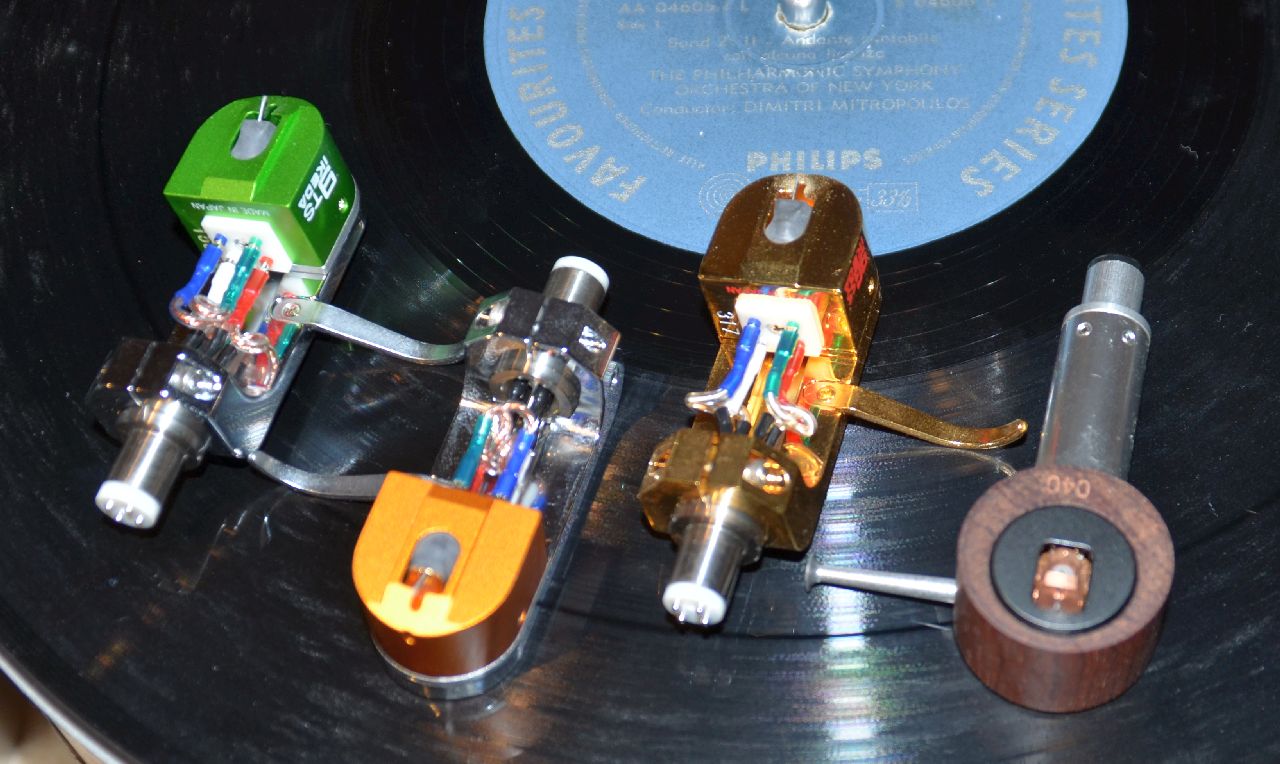 Although
I concentrated on Ikeda's 9Gss top model and the Ikeda MC SUT, I borrowed several of Ikeadas cartidges. Only for a very
short periode, so i had very short time to listen to the other cartridges. Anyway it is very easy to pinpoint the special Ikeda "footprint". There
is a lot of energy in the lower octaves, a nice
present midrange and a detailed airy topr as well as an
immediate ability to make i a lot of fun playing records.
Although
I concentrated on Ikeda's 9Gss top model and the Ikeda MC SUT, I borrowed several of Ikeadas cartidges. Only for a very
short periode, so i had very short time to listen to the other cartridges. Anyway it is very easy to pinpoint the special Ikeda "footprint". There
is a lot of energy in the lower octaves, a nice
present midrange and a detailed airy topr as well as an
immediate ability to make i a lot of fun playing records.
These characteristics then appear to a greater or lesser degree in the individual models. The
slightly distinctive looking Tai (Round Wooden House and fixed SME
shell) provided a super smooth resolution with lots of bottom
energy and an immedalte and natural midrange.The top is beautiful with a little extra physical weight. It must be said to be super suitable for dynamic music with weight behind. Be it pop / rock or classic. The
somewhat voluminous rendering of the lowest octaves will suit
smaller speakers, or you just have to be fond of the added
supplement of weight and physics. Overall, a better but also more full-bodied cartrdige, than two less expensive cartridges in the G series.
Gts and Gtt have the same characteristics, but are somewhat more tight in the lower octaves, yet still with plenty of power. The sound image is big and wide - not as expansive and impressive as the Tai, but still with control and weight behind. There is clearly a little more control in the top with the 9tt compared to 9ts, but not quite as high as 9Gss. Both cartridges are definitely something to be considered, if you look for a cartride in this price range. Many will be pleasantly surprised. They have the 9Gss' musicality and the immediate reproduction in common.
Dropping all the fuss, you could say they are more "music cartridges" and to a lesser degree "hifi cartridges"..
_______________________________________________________________________________________________________________________________________________________________________________
IST-201 - A MC-Transformer that works 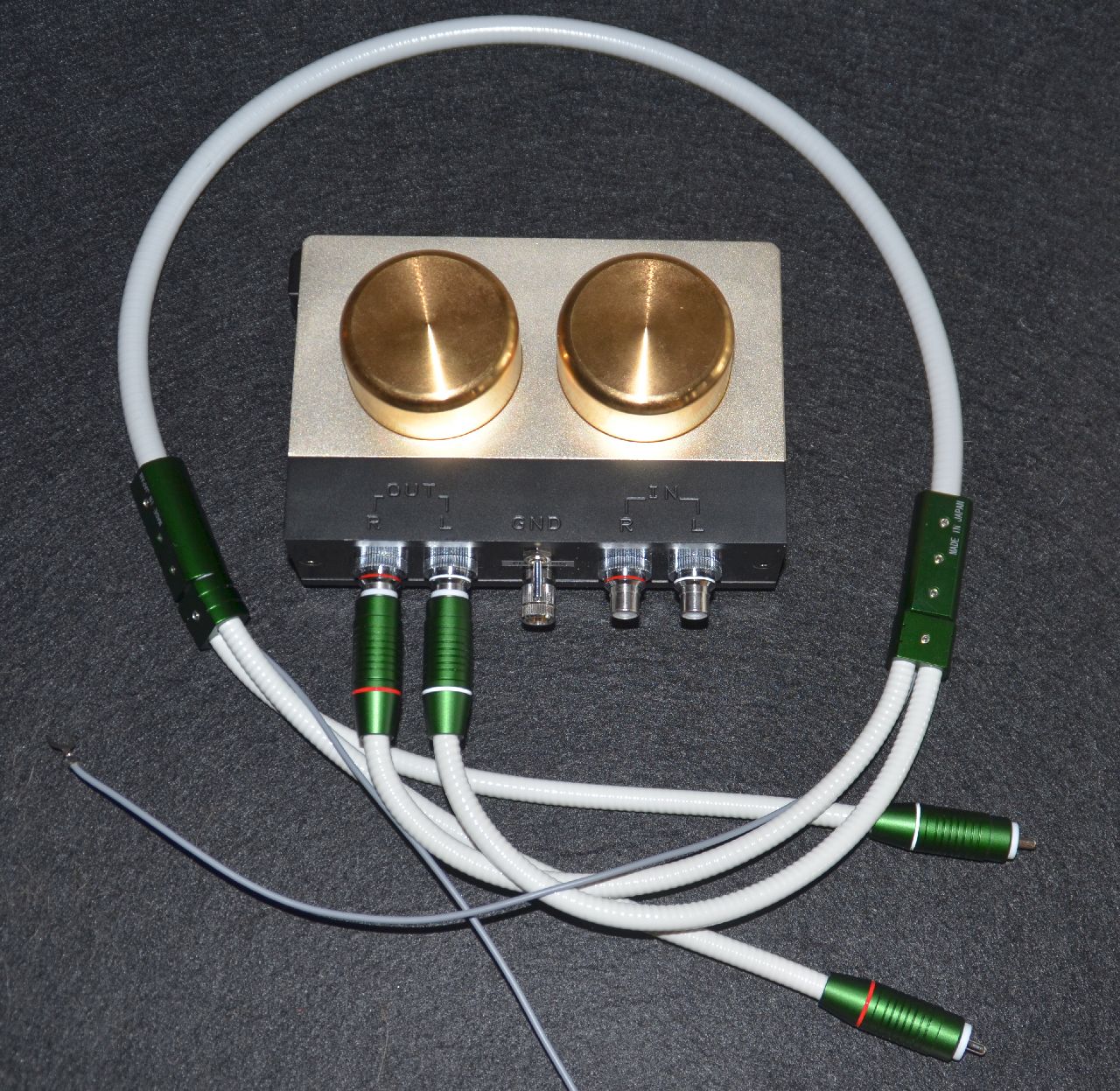 My experience is that step up transformers in the signal path do not always give the best result. I have both Lundahl, Ortofon and a big Denon MC-transformer. I have also tried a lot of other transofrmers, The MC input of my Accuphase C 27 is very good and can give most cartridges optimal load and low noise. This has been the case for many years.
My experience is that step up transformers in the signal path do not always give the best result. I have both Lundahl, Ortofon and a big Denon MC-transformer. I have also tried a lot of other transofrmers, The MC input of my Accuphase C 27 is very good and can give most cartridges optimal load and low noise. This has been the case for many years.
Ikeda
IST-201 does not belong to the cheapest of its kind, but it is made to
fit their own cartriges and is stated to match output
impedances
from 1 ohm up to 6 ohms. They
indicate thatthe SUT is with low loss and that much has been done
to avoid hum and other kinds of disturbance. Th IST-201 is a very solid construction with mu-metal shielding, rhodium plated RCA connectors and a ground lift switch. The gain is set to 26 dB and the output should be loaded with more than 47 kohm.
The specified gain corresponds to a ratio of 1:20. A
transformer is not really an amplifier, but as the name says, it
converts the current from the cartridge to a voltage at the output. This changes the impedance wit a factor 400 (ratio 20x20 = 400 times). This means that the cartridge "looks" into an impedance of approx. 118 ohm, if loaded with the typical 47 kohm. On
the secondary side of the transformer the 3 ohms are converted to an
output impedance around the 400 ohm - sufficient low to drive cable and
RIAA input.
But one thing is data and calculations, something completely different is the sound. Here
I have to admit that the IST-201 in several areas does a better job
that the MC input of my Accuphase. However, there are ar few
things I prefer wiht the active MC input.
No doubt that 9Gss seems super customized to the transformer. There is more energy through it and it sounds much more controlled and tight. There are dynamics and life in the low octaves via the transformer, more than via the MC input. On
the other hand, I found that there is a little more air and openness in
the upper octaves directly into the Accuphase MC input. The sound image is a bit further laid back. In either case, the sublime resolution of the midrange area shines through.
These differences will of course differ with other RIAA amplifiers. If
you have a good tube-RIAA, there is no doubt that Ikeda IST-201 will
provide both Ikedas own and other low-impedance cartridges opitmal
conditions.
I
can not tell if other good MC step-up transformeres in the same
price / quality class can do the same because I've never experienced
positive features like this before. The
whole review was thus carried out with the IST-201 in the signal
path and the final description of the sound is in this constellation.
IST-201 Specifications:
Custom pickups with 2 to 6 ohm internal impedance.
Load on the output: more than 47k ohm
Channel separation: more than 90dB (1kHz)
Frequency range: 10 - 100kHz, ± 0.6dB
Step-Up Level: 26dB
Channel Balance: Within 0.1dB
Dimensions: 14 x 9.5 x 5.6 cm (WxDxH)
Weight: approx. 1.8 kg
______________________________________________________________________________________________________________________________________________________________________________
9Gss - dynamics and musical enjoyment
From the moment the needle hits the groove, I hear it! A deep groan from my speakers. Not noise and not problems with the LP. No, it's simply power, power and energy, from the first strokes showing what energy there is in the music. The presentation of voices is nothing short of impressive. They are maintained in the perspective, regardless of the dynamics and complexity, stand three-dimensional between the speakers. Listening to opera is a pleasure. The top is very distinkt, physical with a bodily sensation that characterizes the sound with nerve and physical presence. Metal has weight, the trumpets and violins have weight. Hearing a picket guitar string is a complete correlation between finger, string and box.
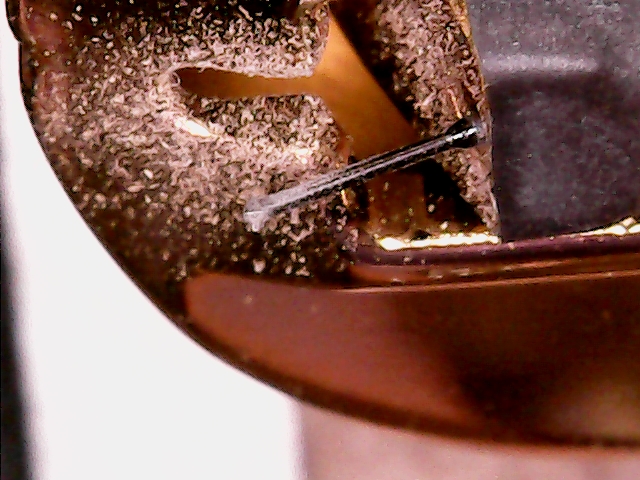
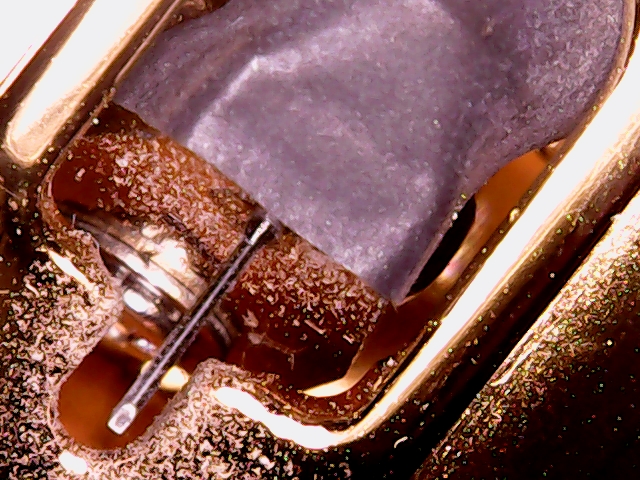
On the pictures taken via my USB microscope, you clearly see the beautiful boron cantilever and diamond.
Everything
is as it should be, and if it does not appear so in the pictures, it's
because the cartridge was slightly slanted during the shooting.
_______________________________________________________________________________________________________________________________________________________________________________
Mzny different kinds of music showed what this cartridge is up to, and very soon lots of different LPs came on the player.
Paul Simon's latest release "Stranger Two Stranger" was declared as one of the best records of 1917. I have listened to this album many times. It
sounds like an empty phrase, but suddenly I heard new things, small
details in the sound image, an instrument to the far right behind
the right speaker. I have experienced this before, but not as vivid as here with Ikeda 9Gss. The laid back song "Insomniac's Lullaby" is presented with a huge sound
image and the moment the bass comes in, it happens in a very
convincing and suprising way. Power and dynamics. Easy to hear even if you play at a lower level.
I can immediately hear how readers protest. "But, it's a digital recording, transferred to LP." Yes,
I also have the digital 24 bit / 96 kHz version and it works well via
my Aurender S10 and Telluriom Q USB into a PS Audio Direct
stream DAC. Now I do not have to take up the old LP contra digital
debate, but wit the Ikeda 9Gss there is no doubt at all. The digital HD file via my
playback chain gives a completely different experience. The digtial
track still have plenty of details and a big open sound stage, but
it is much less exciting, involving and immediate. It's all more smooth and
"nice" and lacks the edge and empathy that comes through the
LP .
If we go to the old recordings that do not come from a digital master, we can take the Dave Brubek Quartet "Gone with the Wind". A
recording from 1958, before "Take Five", but for shure a very
good recording. A very lively record with lots of dynamics and
details. There
is much more juice and power over the reproduction, which really shows
that the LP media is dynamic and vibrant as very few have experienced
it. The piano stands
out with extra power as if playing with greater enthusiasm and the
moment Paul Desomonds saxophone enters the picture, it gave me a smal
chock. I know the album, but it is this surprise experience that makes it extra exciting to listen to music. The record was allowed to finish and I just sat with a big smile on my lips. This is great!
Opera Overtures "Venice" - RCA Victor. Solti and Orchestra of the Royal Opera House, Covent Garden. Again an old recording, with lots of soul and dynamics. Lots of strings with both the correct aggressiveness and a soft "butter" sound. Nice big sound and lots of space. Width
and resolution are certainly not missing, all details are there without
it becoming sterile or pinched. The violins almost sing and all of them
are simply fused to a whole and a total experience.
When the music stopped I was mildly shaken. This cannot be true? I then put a couple of my other good cartrides back on. All in a slightly different price range, but still some of the best. Yes,
they are all still excellent, but the sound seems a little flat and the
room behind the speakers is not as big and all-embracing as via 9Gss. There is just so much more excitement and music in this cartridge. I have seen others describe the sound of the Ikeda cartridges as they "sucking the music out of the grooves". I
totally agree with that. There is not much left behind, but then you
can be pleased that the grooves are still retained for another
musical enjoyment.
Raising Sand with Robert Plant and Allison Kraus has beeen played many times. Previously i thought it was a little pumped in the bottom range, but not here. What a low end! Energy and firmness that gives life to the speakers and especially the tilting foot - i even danced in front of the speakers (not a pretty sight!). The two very different voices that suit each other are super sharp with soul and nerve right there between your speakers. It's a pleasure when an otherwise known record suddenly revives.
My experience with Ikeda 9Gss requires some reassessment of what is possible. Only once before have i experienced something similar. It was with MY Sonic Lab Eminent Gold, which, however, played something more round and warm forgiving compared to the Ikeda. Here everything is mercilessly revealed and it is a pleasure to re-experience all ones records, with new information and life.
Did you read the little story at the start? Yes, Ikeda knows where and how to hammer.
A little reflection
Following this amazing experience with the Ikeda 9Gss, a major question jumps up. No two questions! Should a pickup cost more than many invest in their entire hifi system? No, not necessarily, but there is a difference. Secondly, I must ask myself, "Is my system, my turntable and analogue chain good enough?" Yes, I can easily hear the qualities, but could I actually get even more information? I have previously tried really good RIAA tubeamps and it definitely has to be tried again. There is something basic "back to the roots" in this pickup, which deserves some more optimal conditions than I can offer it. Likewise, it's possible that my DV 507 mk II (which is a fantastic arm) is not the optimal solution. What about a Kuzma 4Point 14", or maybe Ikeda's own 12" arrm? Once again this amazing hobby shows itself from the expensive side. It can always be better - even better than I thought was possible. With Ikeda 9Gss, the musical experience and the joy listening to your hifi takes a gigantic step up the quality ladder. There is no way to avoid it - a new cartridge and an empty bank account awaits.
BACK TO THE FRONTPAGE (in Danish).
le
jof one's plant make a giant leap up the quality ladder. There is no way around - a new pickup and an empty bank account awaits.